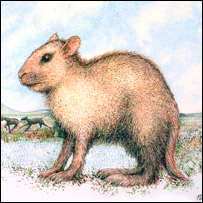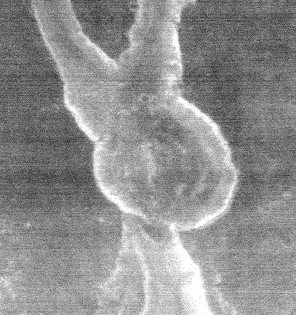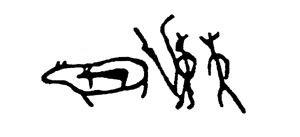Spring and Easter
Easter was the name of the Saxon Goddess of the Spring and of the Dawn. A similar Goddess is found in other European/West Asian cultures. In the Urals, (Finno-Ugrian people) she was Kaltes, eldest sister of the Sun God, the Swan Prince, World-Surveyor-Man. Just as her brother took the form of a swan, so Easter/Kaltes took the form of a hare - hence our Easter bunnies.
 | early bunny from 55 millions ago |
 | pink rabbit from Arnhem with grand-daughter at same age I was when given it by US photographer who was there |
 | there is a bunny on Mars as well as the Moon |
Statues or idols of her were covered in god or silver, especially her face. Often she had a small child on her lap. This image of the young mother goddess holding her child was Christianized into the Virgin Mary.(Gimbutas, 1974)
The Finno-Ugrian/East European/West Siberian origins of this goddess and her associations with dawn, spring and also the planet Venus - as the "Morning Star", can also been seen in Sumerian mythology in what is now South Iraq.
The Sumerians had an agglutinative language with possible links to the Finno-Ugrian languages and other ancient Paleo-Siberian languages. The Sumerians had come originally possibly from Southern Siberia where much of their mythology can be traced to, and their language and culture was superimposed on the Semitic language and culture of the region they conquered about 4,000 years ago in the Bronze Age, and continued for centuries being the written, administrative and academic language.
The goddess Eshtar or Ishtar became merged with Innana, goddess of both sex and war and the planet Venus - the morning star. Her sister, the evening star (but same planet) who appeared near the Sun at sunset, was goddess of the underworld - the land of the dead.
The goddess Ishtar appeared as the Greek goddess Aphrodite and Roman goddess Venus- goddess of sex and love - but not war - that was the planet Mars - Greek Ares - however in the mythology they made love together.
By then there had been reliable astronomical records for about two thousand years and the morning and evening stars were known to be the same planet, whether seen before dawn or after sunset.
In central America which at that time, had virtually no contact with the civilizations of Asia and Europe, the planet Venus was god of war and the careful observations of the astronomers had led to these being used to mark the calendar.
Easter could be written Oestre, associated with words for eggs. Hence the derivative oestrogen for the hormone. Hence Easter eggs as gifts at Easter. Obvious fertility symbol.
On Easter Sunday people at Castleton, in Derbyshire, used to climb the hill on which the castle was built, at six o'clock in the morning, to see the sun rise. They said that the sun danced for joy. They also thought that the sun spins round when setting on Easter Sunday, and went out to watch this spinning.(Addy, 1895)
These beliefs, along with other traditional rituals at Easter, are all that remains of ceremonies once held to mark the beginning of the year at the spring equinox.
The administrative year continued to commence in spring long after the Roman calendar beginning in mid-winter was adopted with Christianity. The year was counted from the 25th March. The government's financial year still begins in spring - because of calendar changes, in early April.
See also:
- Time Before Clocks
- The Moon and Calendars
- Chukchi directions of time and space
This website written, designed and maintained by Heather Hobden The Cosmic Elk 
copyright of Heather Hobden and The Cosmic Elk